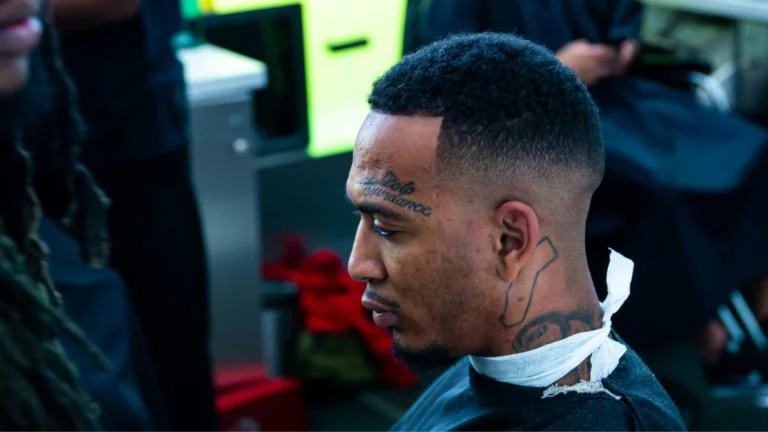Taper vs Fade: Key Differences Between Men’s Haircuts
Tapers and fades are two of the most sought-after haircuts in modern barbershops, often confusing due to their similar appearance and overlapping names. Both styles involve gradually shortening hair on the sides and back, but they create distinct looks that reflect different levels of blending and finish.
Knowing how tapers and fades differ is essential for anyone wanting to communicate clearly with their barber and achieve the exact style they desire. Whether it’s a clean, professional look or a bold, edgy statement. This guide breaks down the essential differences between taper and fade haircuts and offers practical examples to help you master these popular barber terms.
What’s The Difference Between a Taper vs. Fade?
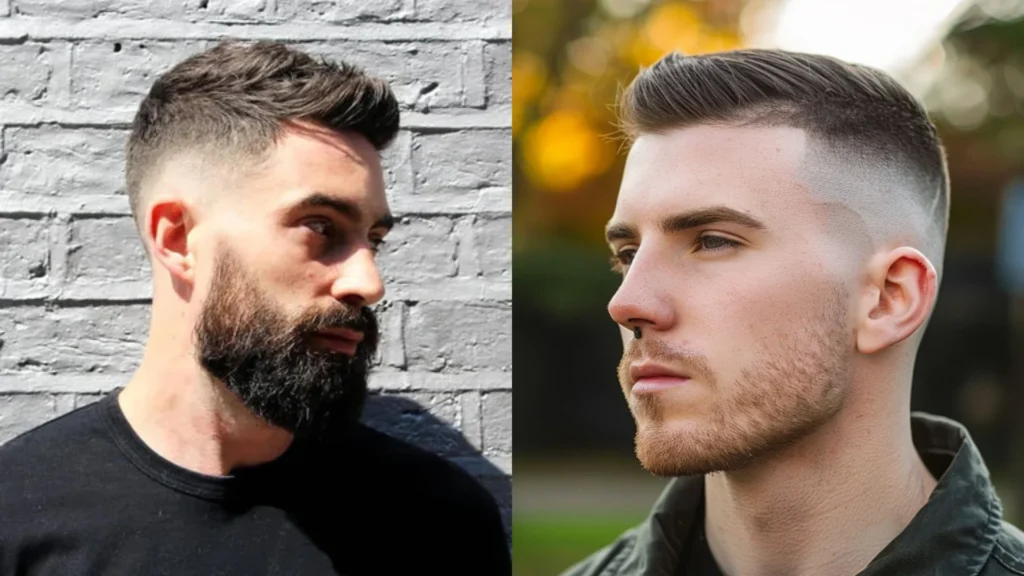
A taper gradually blends the hair from longer lengths at the top to shorter lengths near the neckline and ears, creating a subtle, polished look. It’s evenly cut and doesn’t expose the scalp, making it a more understated and classic choice. The sides and back remain longer compared to a fade, cutting a natural, conservative transition.
On the other hand, a fade features a much sharper transition where the hair quickly shortens, often down to the skin. This creates a bold contrast and a more defined, modern look. Fades are trendier and typically more dramatic than tapers, offering an edgy appearance that’s perfect for those who want to stand out.
Both haircuts follow the natural hairline, and at first glance, a low fade may look similar to a low taper. However, a fade usually ends with a visible skin exposure, while a taper finishes with a soft blend. The best option depends on your face shape, personal style, and the level of sharpness or subtlety you prefer in your haircut.
What Is a Taper?
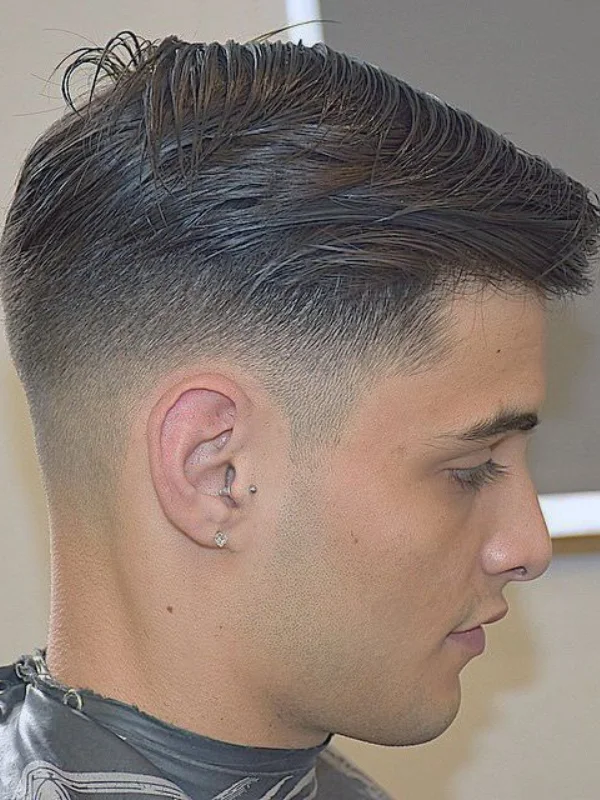
A taper is a classic men’s haircut where the hair gradually shortens from the top down to the sides and back. The transition is smooth, with the shortest hair sitting at the natural hairline around the ears and neckline. This technique provides a clean, blended finish without harsh lines. Clippers with varying guard sizes are typically used to create an even gradient from long to short.
Tapers are ideal for men who want a polished, professional appearance without going too short. The cut allows for multiple styling options as the hair grows, making it both low-maintenance and versatile. Whether you’re getting a standard style or experimenting with new looks, tapers often come built into the haircut, even when not specifically requested.
Types of Tapers
Low Taper
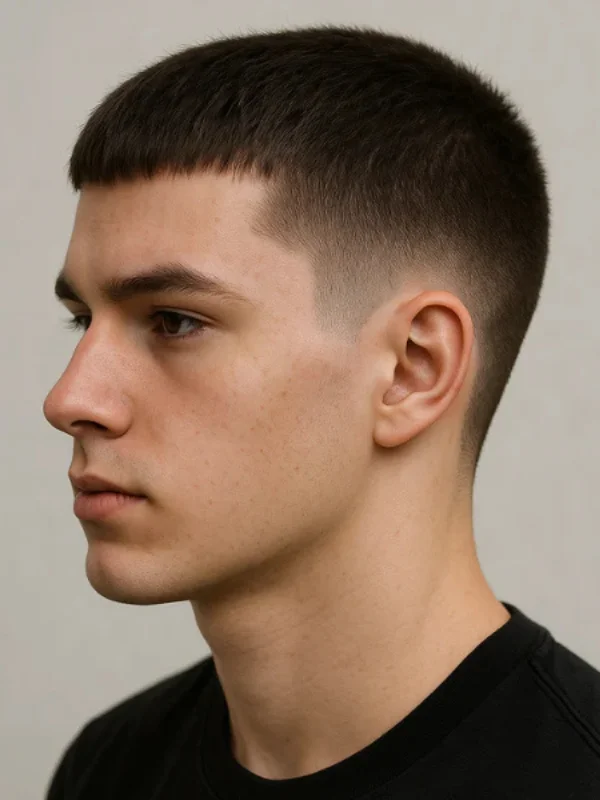
A low taper is a clean and versatile haircut that gradually shortens the hair just above the ears and down to the neckline. This subtle transition keeps most of your hair’s length on top while sharpening the hairline around the sides and back. It’s ideal for those who want a neat appearance without exposing too much scalp. Perfect for both casual and professional settings, the low taper offers a polished, posh finish that works great for an everyday look.
High Taper
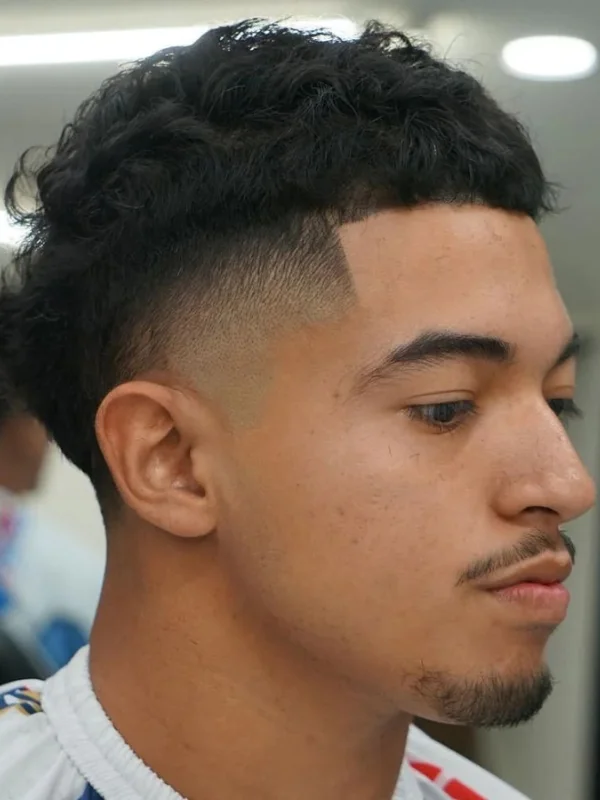
A high taper is a haircut where the tapering starts a few inches above the ears, creating a sharp, noticeable contrast between the top and sides. This style gives a clean, edgy finish and draws attention to the upper part of the head. Unlike a low taper, which transitions more gradually, the high taper stands out more and suits bold, modern looks. It’s often paired with other trendy styles like comb overs and modern high tops to enhance volume, shape, and visual contrast. The high taper works well for men who want a sharper silhouette without going for a full fade.
Tapered Neckline
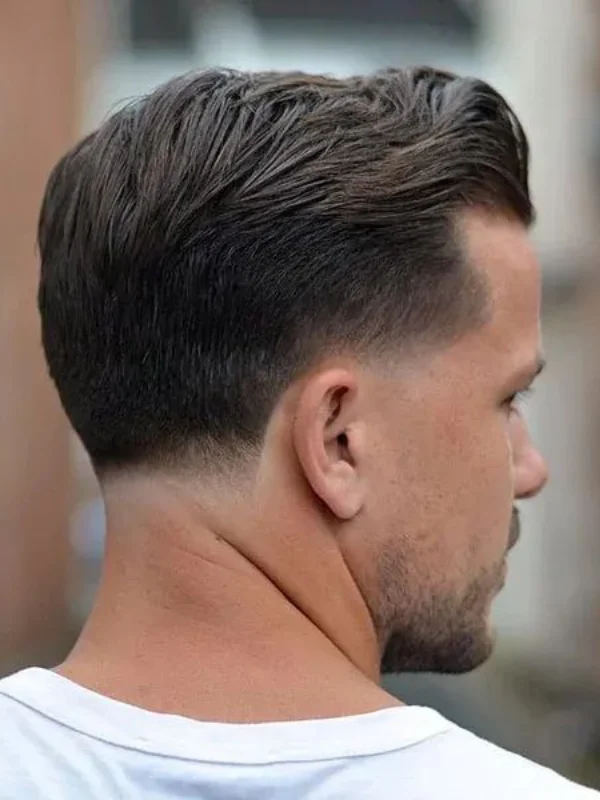
Both taper and fade haircuts can be enhanced with a tapered neckline, which offers a clean, natural finish that blends smoothly as the hair grows out. The way your neckline is cut adds personality to your look, whether you choose a sharp disconnect, a stylish design, or a more traditional shape. A tapered neckline is ideal for low-maintenance clients, while rounded and blocked necklines provide more defined edges but require frequent maintenance to keep their shape. Each neckline option influences how your haircut looks between barber visits, so selecting the right style depends on your grooming routine and personal taste.
Skin Taper
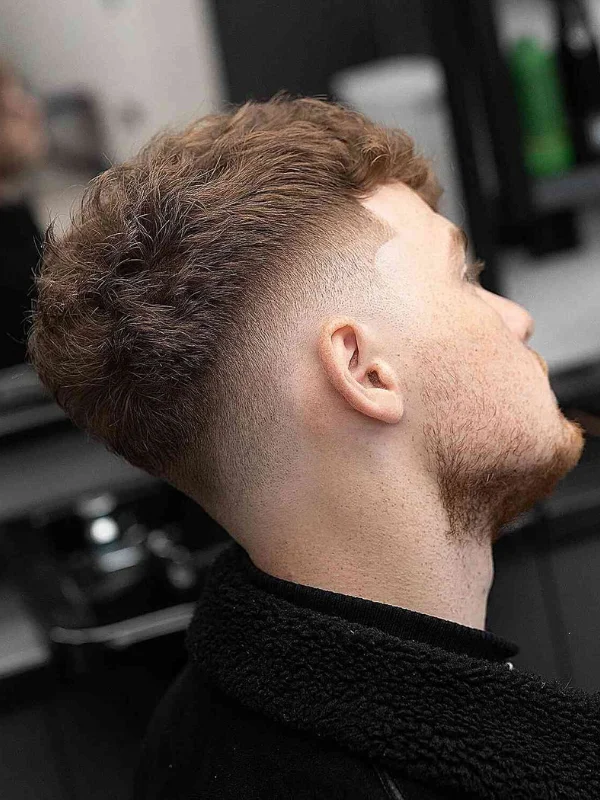
A skin taper is a sharp and modern haircut where the hair gradually fades down to the scalp, leaving the skin visible at the neckline and sides. This clean finish is achieved by shaving close to the skin using clippers, making it ideal for those who want a low-maintenance yet stylish look. Skin tapers can be combined with other styles like high, mid, or low tapers, enhancing versatility for different face shapes and personal styles. Especially popular in warm weather, the skin taper keeps hair off the neck and face, providing comfort along with a bold, polished appearance. Whether added to a classic crew cut, a fade, or a trendy textured top, a skin taper is an easy upgrade to freshen up any haircut.
What Is a Fade?
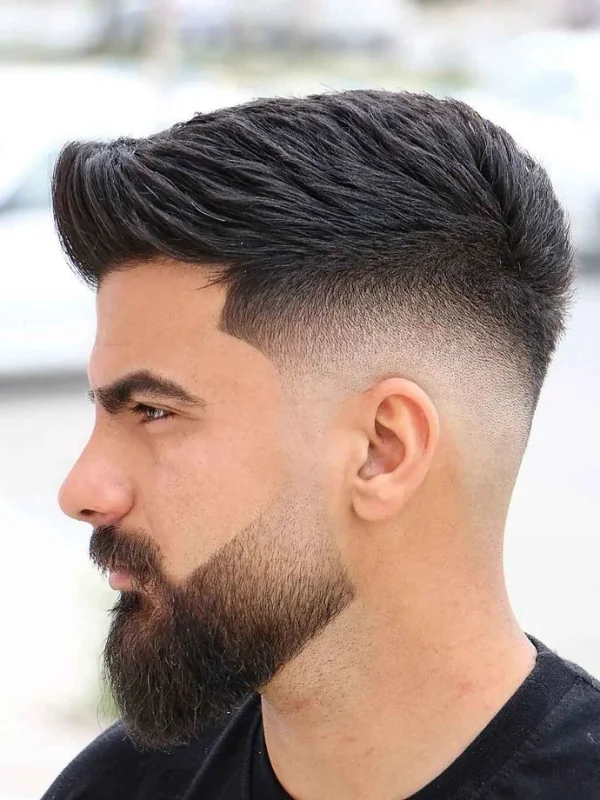
A fade haircut is a stylish, modern cut where the hair transitions smoothly from long on top to very short or skin level on the sides and back. This look is achieved with clippers, blending the lower part of the hair into the skin for a sharp, clean finish. Fades create a more dramatic contrast than tapers, offering an edgier appearance that’s especially popular among younger men. They elevate any hairstyle by adding bold definition and a fresh, sleek vibe. While fades require more upkeep to maintain their crisp shape, they are versatile enough to pair with various styles.
Key Features of the Fade
A fade is known for its sharp, high-contrast finish that seamlessly blends hair from longer lengths on top down to bare skin on the sides and back. This clean gradient creates a bold and modern look that appeals to those wanting a fresh, stylish cut. Fades work especially well with updated versions of classic hairstyles, adding a sleek edge to timeless looks. However, to keep the fade looking sharp and precise, regular trips to the barber shop are essential for upkeep and shaping. This maintenance ensures the fade retains its clean finish and polished appearance.
Low Fade
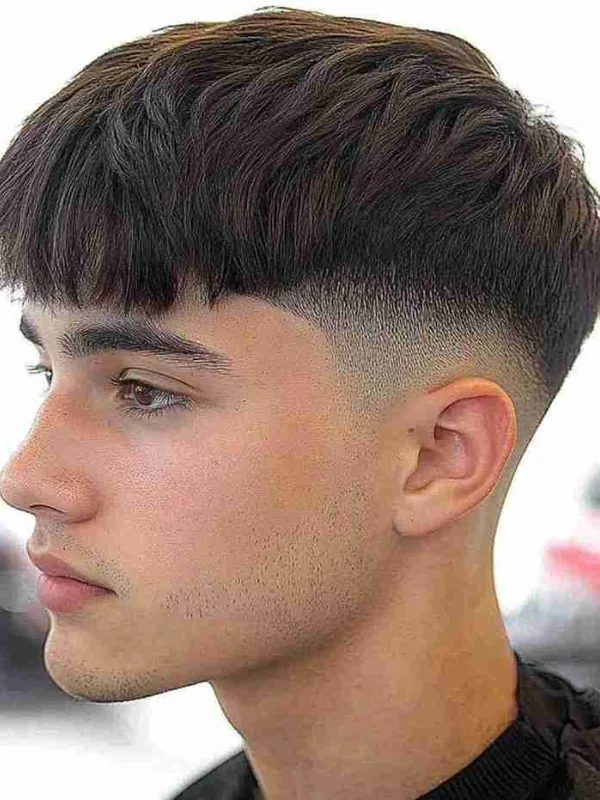
A low fade starts just above the hairline, similar to a low taper, but it features a sharper and more noticeable drop in length. This abrupt transition creates a bold contrast that gives the haircut a clean, stylish edge. Unlike the gradual blending of a taper, a fade quickly exposes the skin, especially around the sides and back. The low fade is a versatile option that adds extra flair to short styles like a crew cut or buzz cut, making it perfect for those who want a modern look without going too extreme. It’s a great choice for both casual and professional settings.
Drop Fade
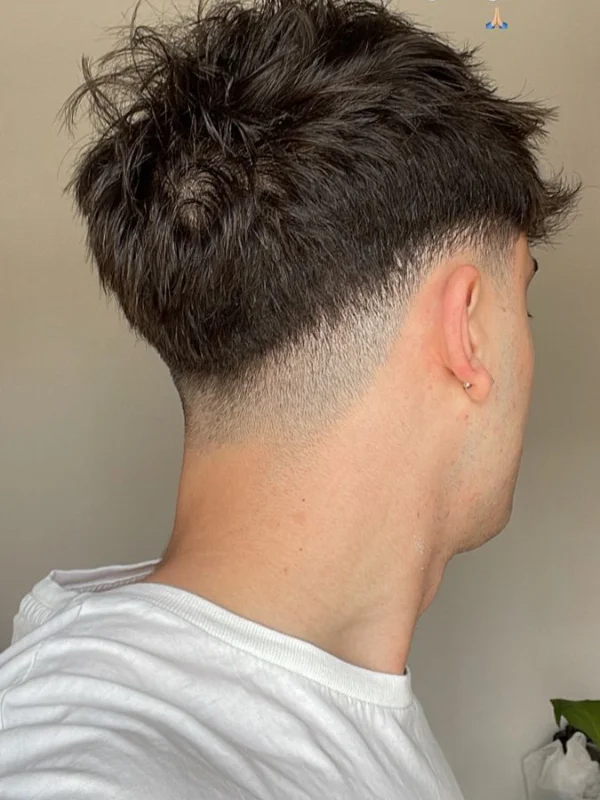
Drop fades are a modern twist on the classic fade, designed for those who want a more contoured and stylish finish. Unlike a classic fade, which maintains a straight taper around the sides, a drop fade curves down behind the ears and follows the natural shape of the head, creating a more sculpted and dimensional look. This cut adds depth and contrast, making it a standout option for various hair textures and styles. However, due to its unique shape, it requires regular upkeep to maintain its clean lines and smooth transition. Between barber visits, basic at-home fade maintenance, such as trimming with clippers and using a mirror for symmetry, can help preserve the look until your next appointment.
Skin Fade
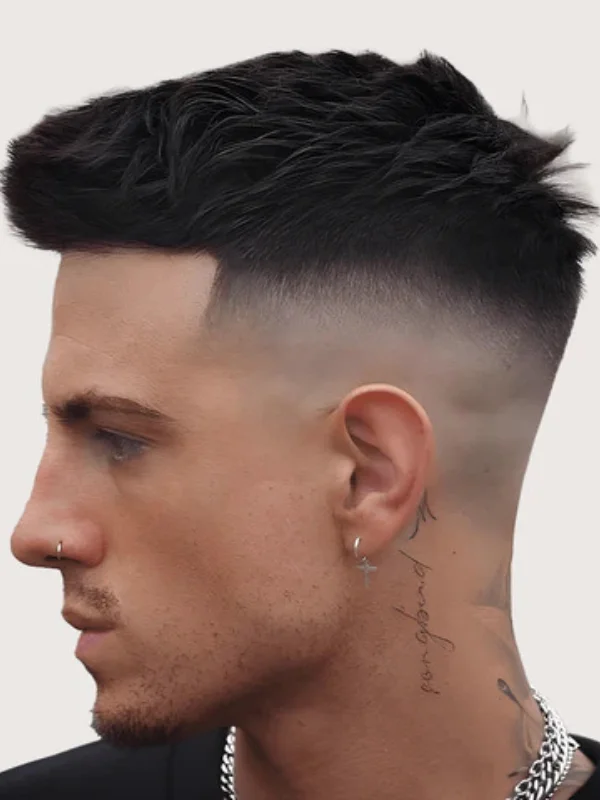
A skin fade, also called a bald fade, is a bold and modern haircut that tapers the hair down to the skin, stopping just before the natural hairline. Like a skin taper, it creates a clean, skin-exposing finish but fades higher and more dramatically. This versatile cut pairs well with longer styles like a quiff or pompadour, offering contrast and structure. It’s also a great match for shortcuts, making it ideal for those who prefer a sharp look with minimal styling. Whether you’re going for a stylish edge or a low-maintenance routine, the skin fade adapts easily to your preference.
Undercut Fade
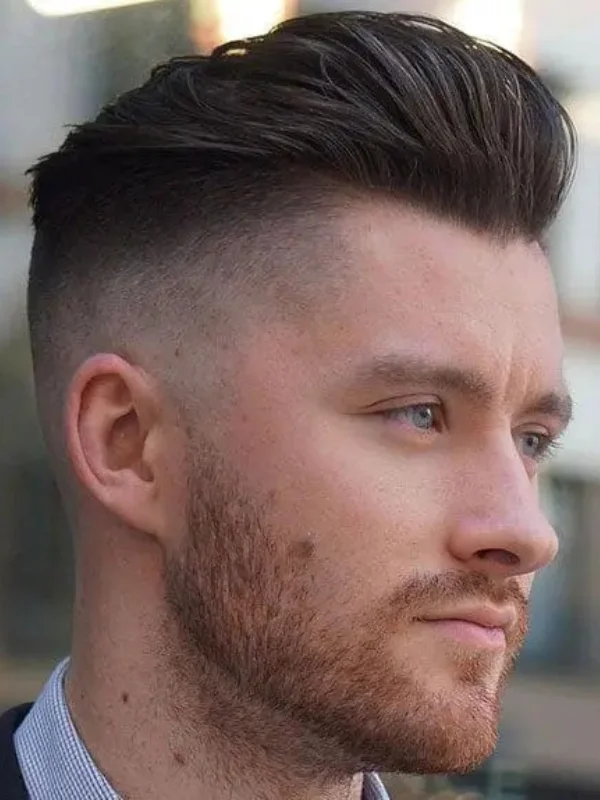
The undercut fade combines a high, blurry fade with sharply contrasting lengths, making it a bold and stylish option. Typically starting high above the ears, this fade creates a clean, dramatic transition that works especially well with long hair on top. The sharp contrast emphasizes volume and movement, giving a modern edge to traditional cuts. Adding a hard part or opting for a disconnected cut enhances the visual separation between the top and sides, offering a sharper, more structured appearance. This makes the undercut fade a great match for refined yet trendy styles like the Ivy League cut, blending classic form with a fresh, edgy twist.
Faux Hawk Fade
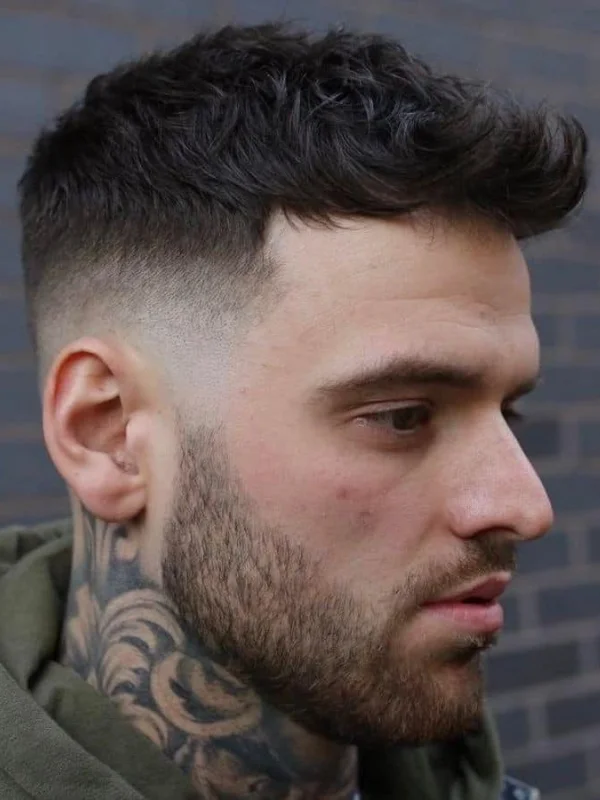
Faux hawks and mohawks differ mainly in how the sides are styled. Mohawks feature completely shaved sides for a bold, edgy look, while faux hawks keep some hair on the sides, making them more versatile and wearable. A faux hawk fade enhances this style by blending a gradual fade into the sides, creating a sharp contrast with the longer top. This subtle play on height and length adds dimension without being too dramatic. For those wanting a cleaner, more refined version, pairing it with a tapered cut offers a softer finish, making the style both stylish and professional.
High Fade
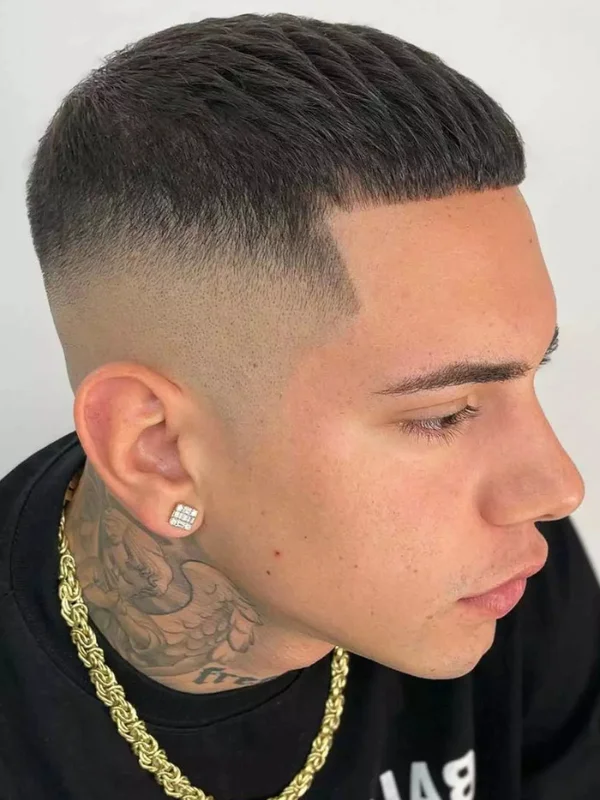
The high fade is a sharp, modern haircut that begins a few inches above the ears and tapers quickly down to the skin. Known for its clean and bold look, this style offers barbers plenty of canvas to add intricate hair designs or patterns. It’s a versatile choice that suits both edgy and minimalist preferences, whether you want a sleek design or prefer to keep the top short for a low-maintenance finish. Ideal for men seeking a standout cut, the high fade enhances facial features and adds structure to any hairstyle.
What Is a Taper Fade?
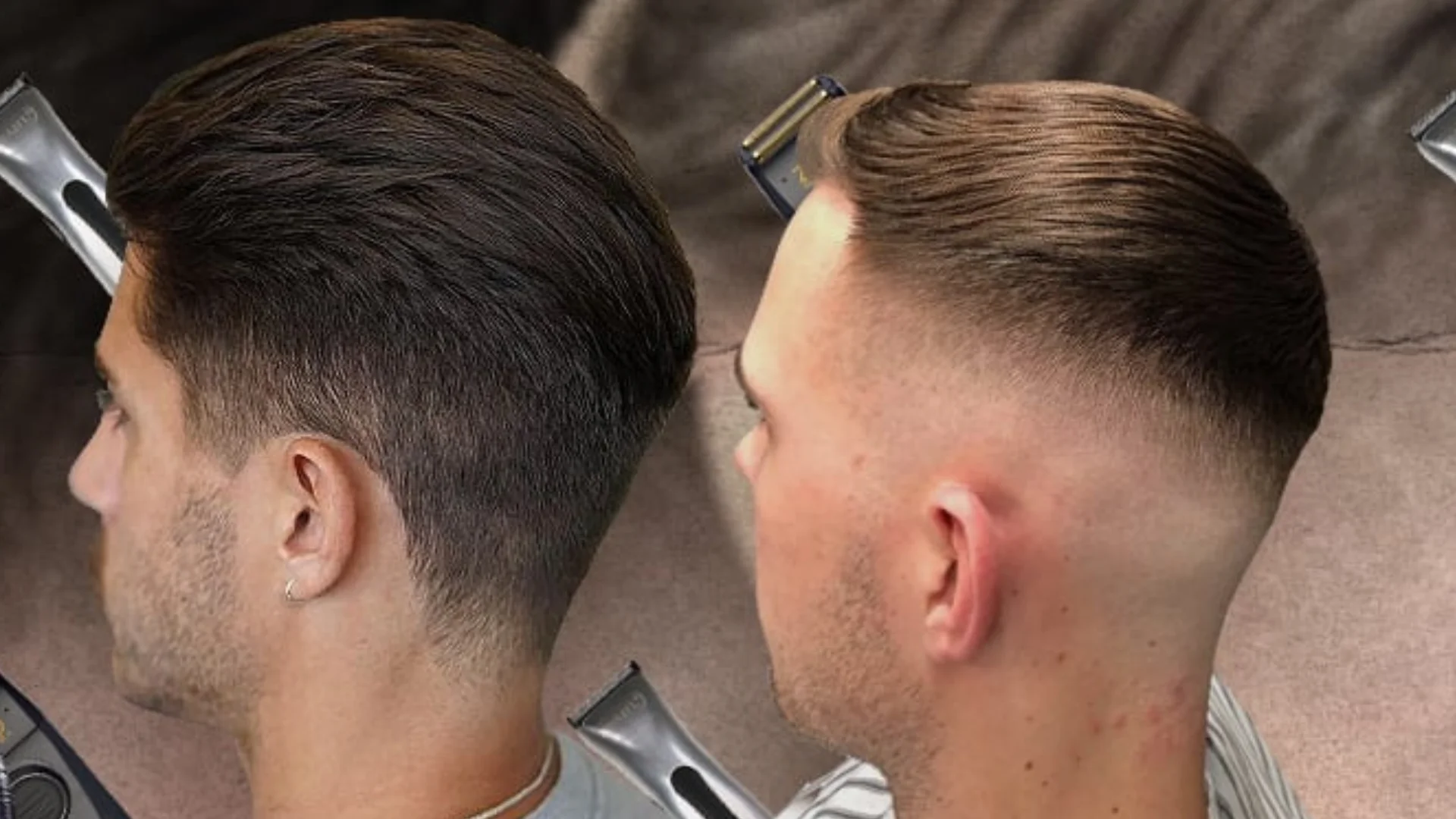
A taper fade isn’t a specific haircut but rather a mix of two popular styles, tapers and fades, often confused by clients. While barbers understand what you mean when you ask for a taper fade, the results can vary depending on interpretation. A taper fade generally blends the hair gradually near the neckline and sideburns, fading into the skin with a smooth transition. Since it’s more of a description than a defined cut, it’s best to bring reference photos to your barber appointment to ensure the final style matches your expectations.
Key Features of the Taper Fade
The taper fade blends longer hair on the sides and back into a shorter length near the neckline, offering a clean, refined finish. This versatile haircut is low-maintenance and ideal for those seeking a sleek, stylish appearance without constant upkeep. With its smooth transition and soft edges, the taper fade works especially well with sophisticated styles like side parts, slick backs, crew cuts, and layered looks, making it a go-to for both modern professionals and classic style enthusiasts.
Fade Comb Over
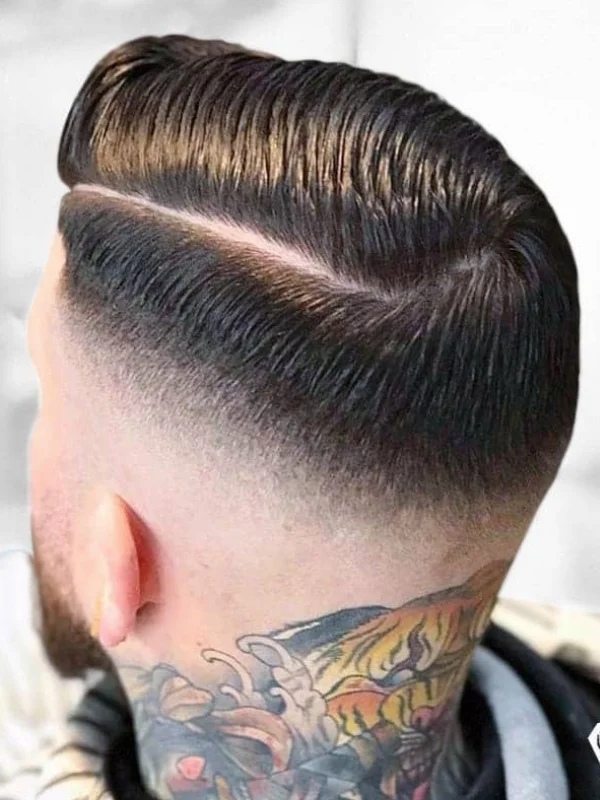
The comb over has transformed from a practical solution for thinning hair into a modern, stylish haircut that suits all hair types and face shapes. With various lengths and shapes, it’s now a versatile option for anyone seeking a clean, polished look. The fade comb over adds a sharp touch by blending faded sides into longer hair on top, making it especially flattering when paired with facial hair. Both tapers and fades are excellent haircut choices; tapers offer a subtle, gradual blend ideal for a natural finish, while fades provide a more dramatic contrast and cleaner edges. Before choosing a style, explore photo inspiration and consult a trusted barber who can recommend the best cut based on your preferences and features.
How To Choose Between A Taper and Fade Haircut
Deciding between a fade and a taper depends on three key factors: your natural hair type, the level of contrast you want to achieve with your haircut, and how much time or money you’re willing to spend on regular maintenance at the barbershop. Fades create a bolder, high-contrast look with sharp transitions that often require frequent touch-ups, while tapers offer a softer, more subtle blend that’s easier to maintain. Understanding how each style complements your hair texture and grooming routine helps you choose a look that’s both stylish and practical.
Factor Your Hair Type and Texture
Straight, wavy, and curly hair each benefit uniquely from fades and tapers. Straight hair gains sharper definition and a fuller appearance with a fade, while a taper offers a softer, more natural look that still enhances structure. Wavy hair works well with a fade to reduce bulk and maintenance while keeping the top textured, whereas a taper highlights the natural wave pattern with a cleaner, blended finish. Curly hair pairs well with a fade for a neat, low-maintenance style that defines curls by removing weight on the sides and back, while a taper keeps more length, drawing attention to the curl pattern without sacrificing shape.
Contrast and Hairstyle
A very short men’s haircut benefits greatly from a fade on the sides and back, as the sharp contrast adds depth and structure, enhancing its bold and rugged appeal. While both tapers and fades complement short styles, taper fades lean toward classic gentleman’s looks with smoother transitions, ideal for conservative or professional settings. In contrast, faded cuts deliver a striking, high-contrast finish that suits modern, edgy hairstyles. Medium and longer hairstyles also pair well with both tapers and fades, depending on the desired aesthetic, though most clients tend to prefer low or medium fade variations for a balanced, versatile style that maintains sharpness without being too extreme.
Time and Money For Maintenance
While all haircuts need occasional upkeep, the level of maintenance varies significantly between styles. Tapers offer a more subtle and natural look that blends into your hair as it grows, meaning you can go longer between trims without sacrificing neatness. In contrast, fades demand precision and lose their sharpness quickly, often appearing messy within weeks. This makes fades more time-consuming and costly to maintain, requiring appointments every two to three weeks to keep them looking clean. For professionals who want a polished appearance without constant upkeep, a taper fade strikes the perfect balance, refined enough for the office, yet low-maintenance for a busy lifestyle.



